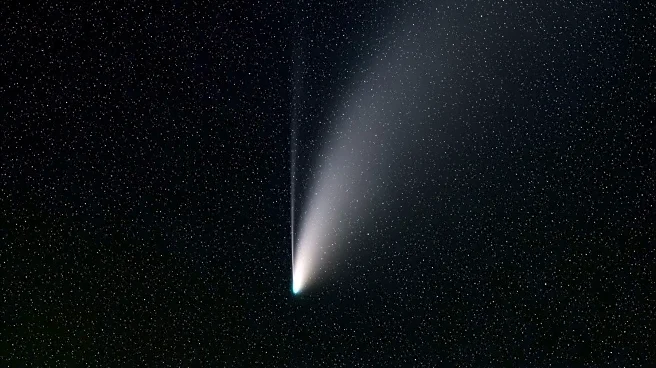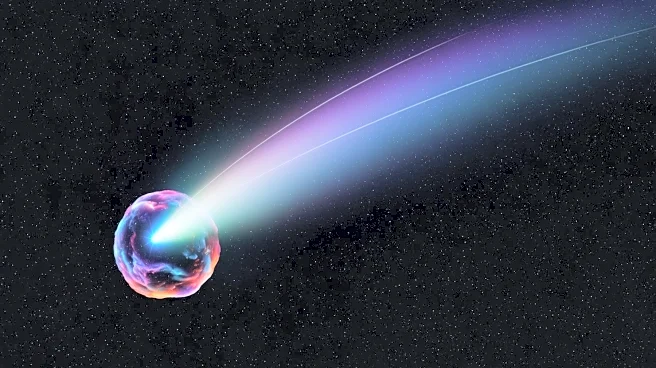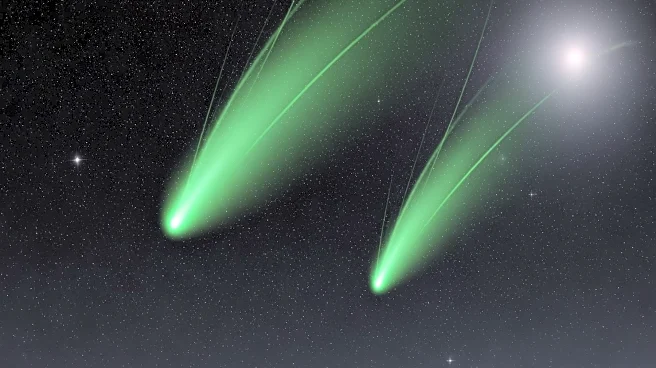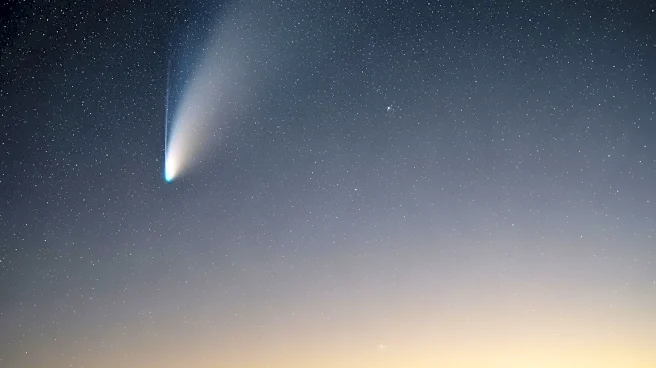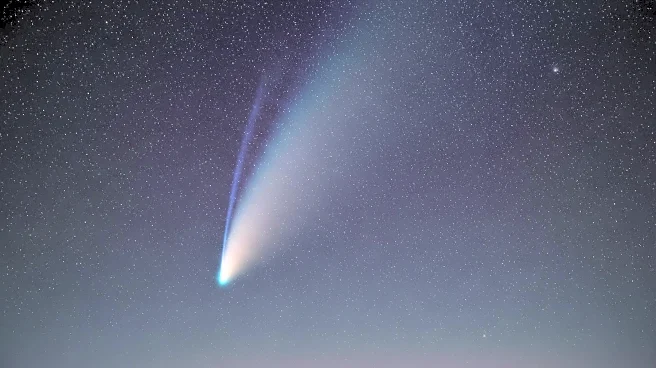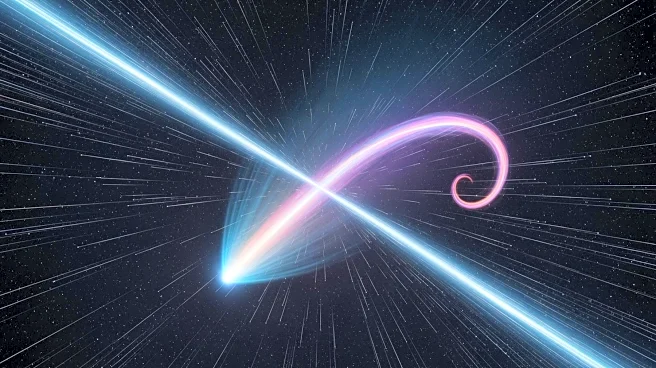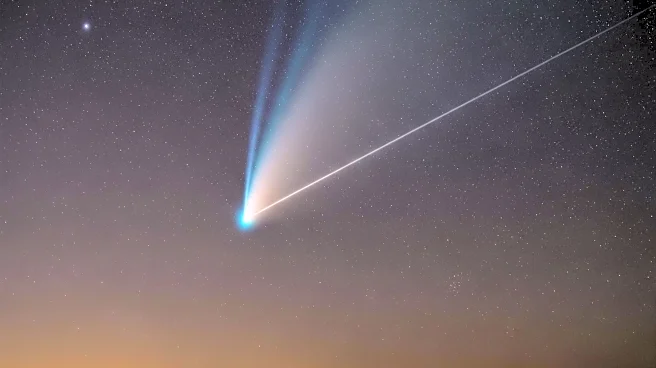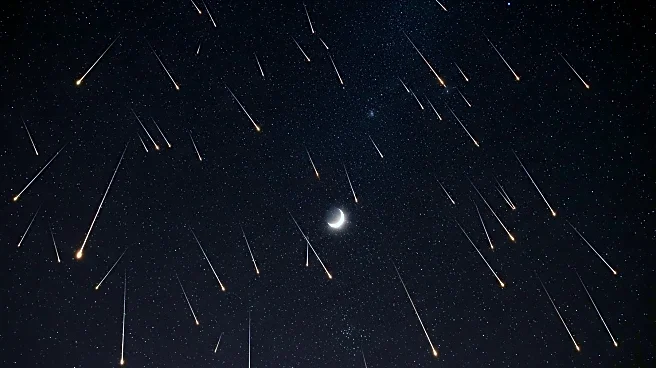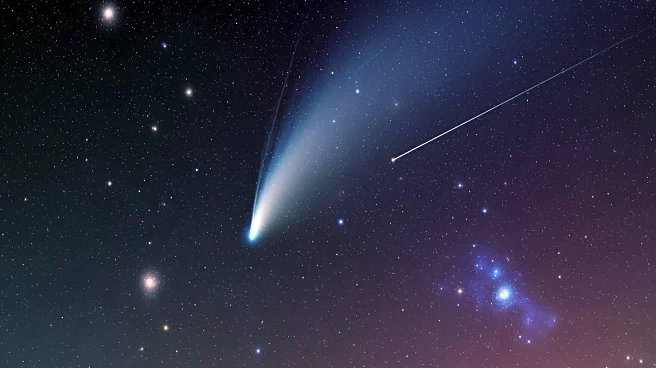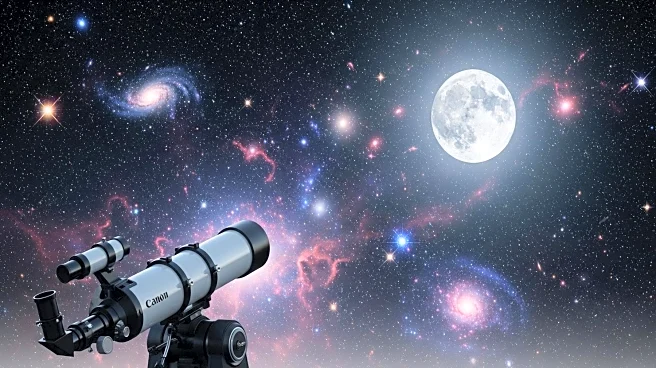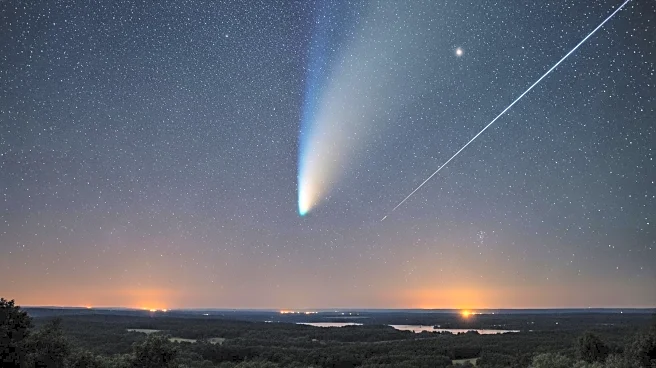What's Happening?
Comet Lemmon, discovered earlier this year, is set to make its closest approach to Earth on October 21, coming within 28 million miles. The comet, known as Comet C/2025 A6, will be visible in the night
sky, particularly vivid through binoculars or telescopes. Its approach coincides with a new moon, enhancing visibility. The comet will be located in the constellation Bootes and later pass through Serpens. Residents are advised to find dark areas for optimal viewing and allow their eyes to adjust to the darkness. The comet's icy deposits are vaporizing due to the sun's heat, creating a gaseous coma and tail that reflects sunlight.
Why It's Important?
The appearance of Comet Lemmon provides a unique opportunity for amateur astronomers and the general public to observe a celestial event. Such events can inspire interest in astronomy and science education, encouraging people to learn more about the solar system and space phenomena. Additionally, the comet's visibility coincides with the Orionid meteor shower, offering a rare chance to witness multiple astronomical events simultaneously. This can enhance public engagement with science and foster a greater appreciation for the natural world.
What's Next?
As Comet Lemmon continues its journey, astronomers will monitor its path and behavior, potentially gaining insights into cometary dynamics and solar system interactions. The comet's visibility will decrease as it moves away from Earth, but its observation may contribute to ongoing research in cometary science. The Orionid meteor shower will peak shortly after the comet's closest approach, providing another opportunity for skywatching and scientific observation.
Beyond the Headlines
The event highlights the importance of public access to scientific information and the role of observatories and planetariums in educating the public about space. It also underscores the interconnectedness of celestial events, as the comet's approach and the meteor shower offer a combined spectacle. Such occurrences can stimulate interest in space exploration and the potential for future discoveries.
